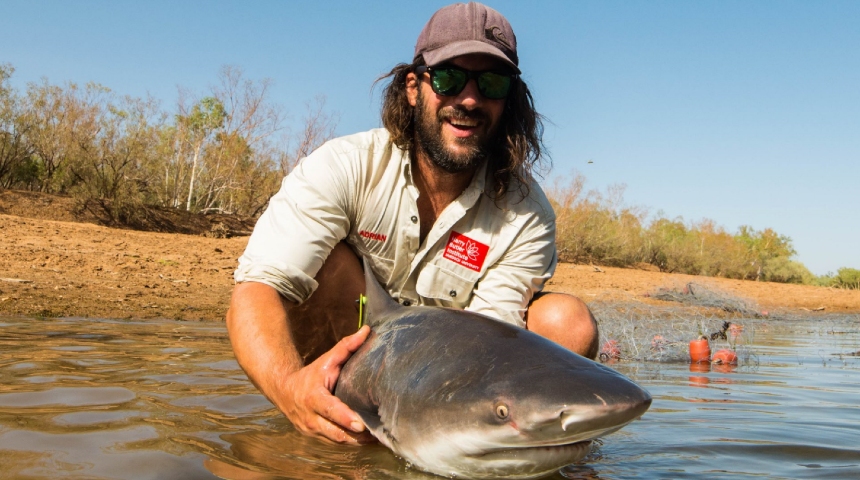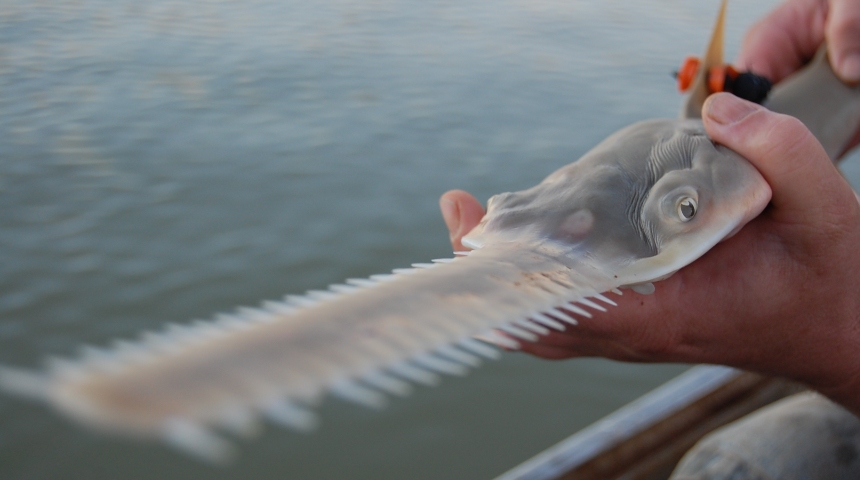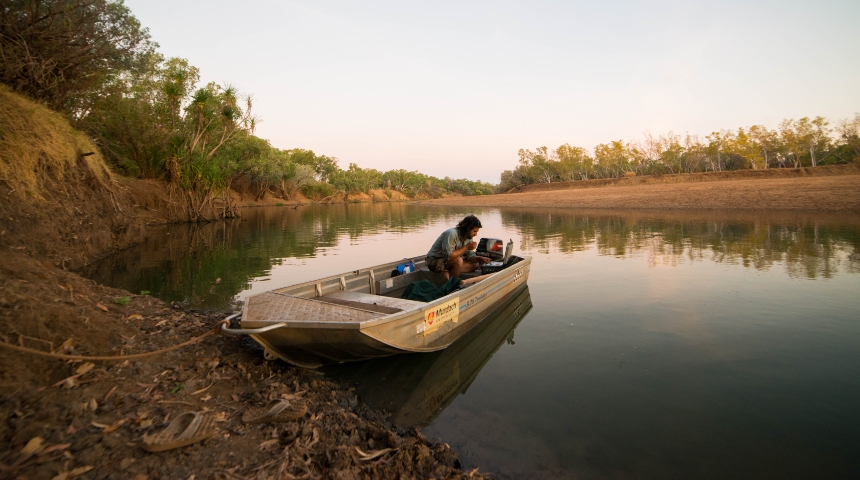
As marine ecosystems around the world face critical threats posed by global warming, exploitation and pollution, researchers are documenting the daily lives of marine animals in efforts to save them.
“Successful conservation and management of any species ultimately depends on identifying what the species needs in order to survive and flourish,” said Dr Adrian Gleiss of the Harry Butler Institute.
“But this is difficult in marine animals, as they spend most of their time out of human sight and reach.”
As the United Nation’s Sustainable Development Goals call for the protection, restoration and sustainable use of marine ecosystems, building our knowledge of the animals within them is essential.
Dr Gleiss, who leads research into marine megafauna at the Harry Butler Institute, is documenting the daily lives of some of the most endangered fish in the sea to inform conservation efforts.
Discovering what goes on underwater
For many marine animals, gaining an understanding of their physiology, behaviour and distribution can be challenging. However, new techniques and technologies are opening their world up to researchers.
Dr Gleiss and his team are using electronic tags to collect information whilst animals go about their daily activities.
“What my group is doing is to develop and apply tools that can shed light on the activities of marine animals, with an ultimate view to understand them better,” said Dr Gleiss.
The main technique they use, called bio-logging, is being applied to species ranging from jellyfish to whale sharks.
Bio-logging is the use of animal-attached ‘smart-tags’ that act like an electronic diary, recording every aspect of the life of its carrier.”
Dr Adrian Gleiss
“We use fast sampling sensors, such as accelerometers, gyroscopes, magnetometers, depth and temperature sensors to reconstruct the lives of some of the most enigmatic marine species,” said Dr Gleiss.
The use of smart-tags, however, also poses a few logistical challenges, namely how to attach the tags and to recover the precious data.
The fast sampling sensors collect giga-bytes of data in a matter of days – too much to be transmitted by satellite. Instead, the data is stored on the tag and researchers use satellite and radio beacons to track it down after its released from an animal.
“It is always a nervous wait to see where the tags will resurface, as some animals can cover hundreds of kilometres in a few days,” explained Dr Gleiss.
Understanding an endangered species
The research team’s use of bio-logging has provided some important insights into the workings of wild animals in their natural habitat.
One of the animals to benefit from this research in Western Australia is the largetooth sawfish, a species capable of moving freely across a range of environments, from pure freshwater to the oceans.
“Together with Associate Professor David Morgan and Dr Karissa Lear, we have been able to understand the role of the wet season flooding for the largefish sawfish, one of the most threatened fish species globally,” said Dr Gleiss.
 Image caption: A sawfish pup with a smart tag attached to its dorsal fin
Image caption: A sawfish pup with a smart tag attached to its dorsal fin
Their research has demonstrated that wet-season floods are important for the health of sawfish, with animals in greater body condition after big floods than those following poor wet-seasons.
“Tropical rivers, such as Western Australia’s Fitzroy River in the West Kimberley region, act as nurseries for this species,” said Dr Gleiss.
The use of bio-logging tags to log migration and movement behaviours of the fish has brought worldwide attention to this globally threatened species.
Protecting important habitats
Gaining a better understanding of the habitats in which threatened marine species live is key to protecting both the animal and their ecosystem.
“A solid understanding of the requirements of species, especially threatened species, represents an important step in protecting and restoring habitats,” explained Dr Gleiss.
“Sustainability relies on ensuring that the most important habitats can be protected, however, this first requires us to identify those habitats.”
Some of the biggest threats to marine ecosystems are anthropogenic, such as changing climates, over-exploitation of marine resources and habitat destruction.
The most important strategy to halt all problems is to use science and evidence to guide any action.”
Dr Adrian Gleiss
“However, it is very important to remember that there are human livelihoods that depend on some of the activities that impact biodiversity, so it’s crucial to engage everyone in developing solutions.”
 Image caption: Dr Gleiss tracking tagged sawfish on the Fitzroy River
Image caption: Dr Gleiss tracking tagged sawfish on the Fitzroy River
Dr Gleiss and his team are part of the Harry Butler Institute’s Centre for Sustainable Aquatic Ecosystems.
The centre’s mission is to provide, through discovery and innovation, adaptive and lasting solutions for protecting the health of aquatic ecosystems that underpin our economy and society.
“Murdoch is a very exciting place to do work on animals, as we have a really broad suite of expertise, from leading wildlife veterinarians to terrestrial wildlife biologists, as well as a suite of skills in the technology space that allows for exciting multi-disciplinary research.”
This research supports the United Nations Sustainable Development Goal 14 to conserve and sustainably use the oceans, seas and marine resources for sustainable development.
